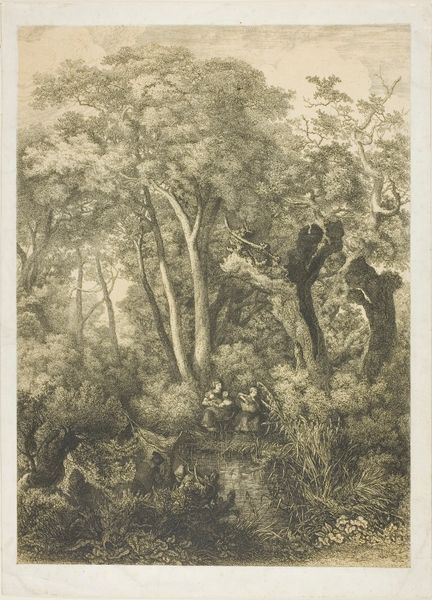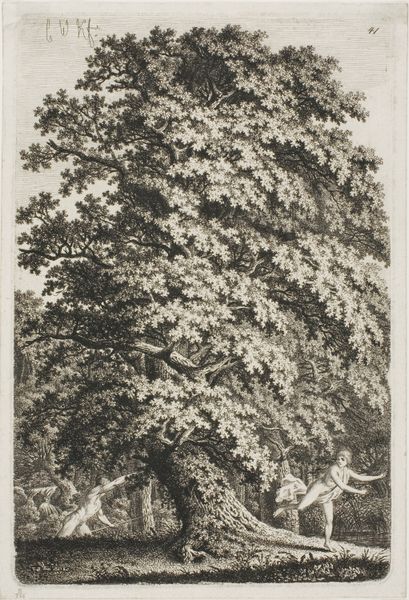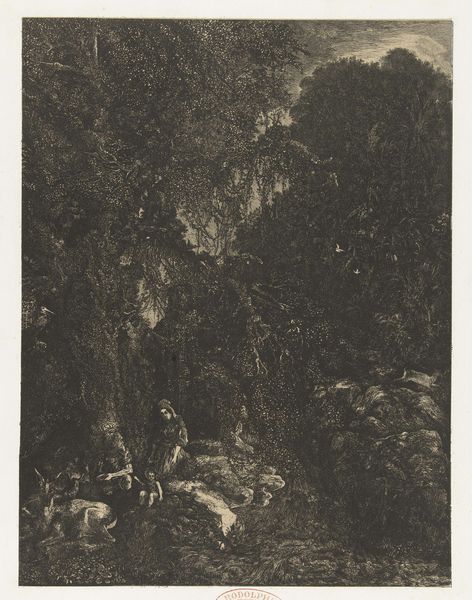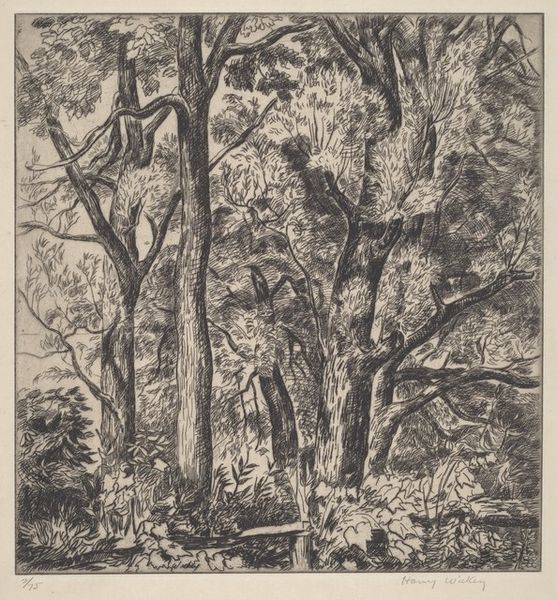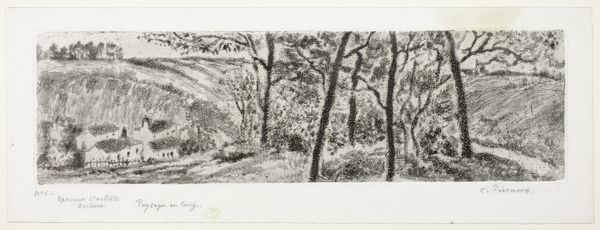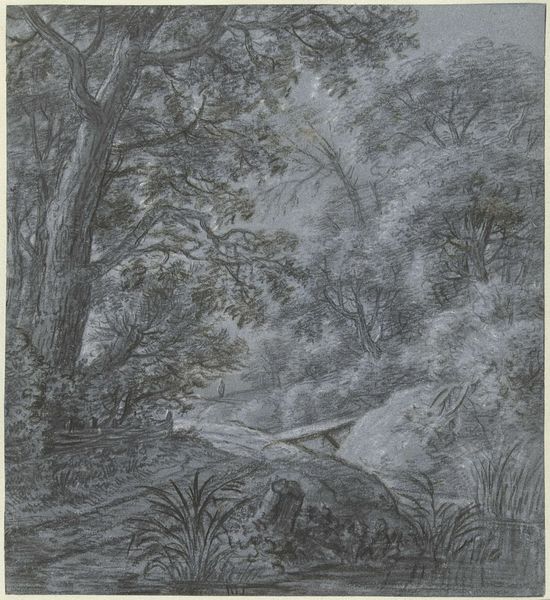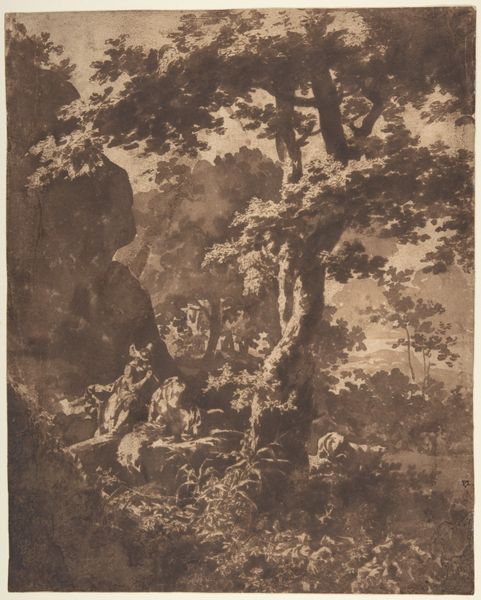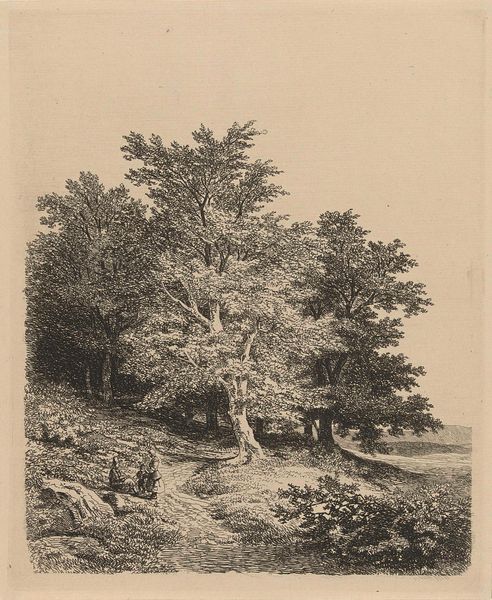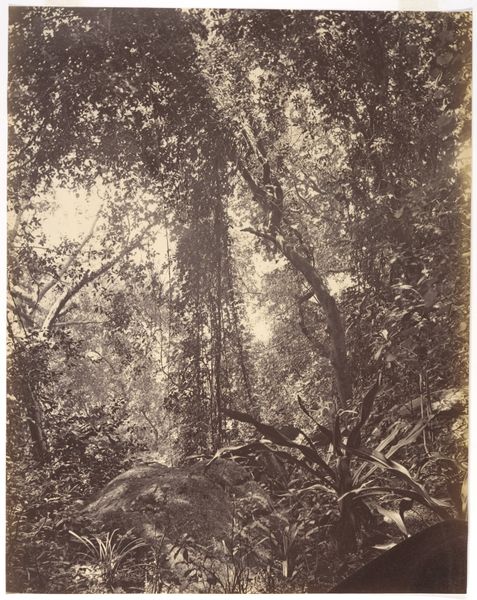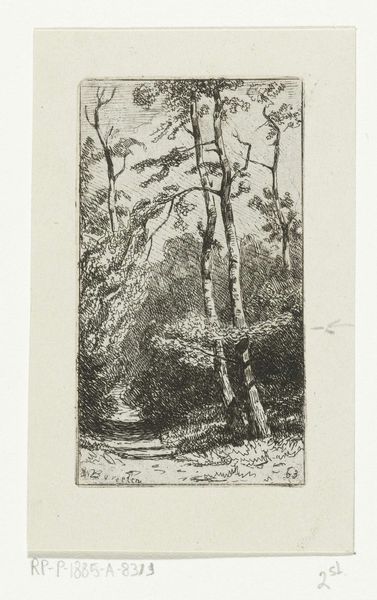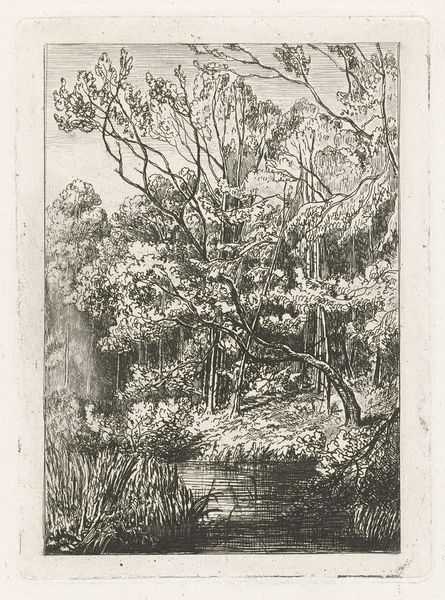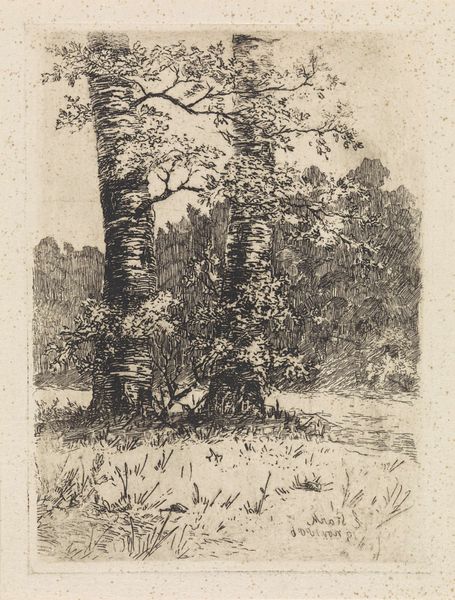
Dimensions: 202 × 148 mm (image); 226 × 173 mm (sheet)
Copyright: Public Domain
Curator: This is Rodolphe Bresdin’s etching from 1880, titled "The Forest of Fontainebleau," presently residing at The Art Institute of Chicago. Editor: Dense! Almost claustrophobic, in a way. The textures are incredibly intricate. What's particularly striking is the almost complete lack of breathing room in the composition. Curator: Indeed, the forest depicted rejects any notions of classical, idealized landscape. Instead, it embraces a realism that hints at Romanticism in its sublime density. Editor: Tell me about that density. How does the composition direct us, if at all? Curator: Note how the layering of lines and textures, achieved through meticulous etching, creates a deep visual field while simultaneously flattening the image. Our eyes struggle to find a focal point, as if lost within the woods themselves. It recalls notions around Baudelaire and flânerie... being adrift, aimless. Editor: You know, there is something evocative of 17th-century Dutch landscape painting here too. Except, there’s no discernible narrative. Where are the people? Even the light is diffuse, rejecting any singular perspective. It’s almost a metaphor for something… the impenetrable quality of the forest reflecting an unknowable internal space. Curator: Fascinating thought. It could even speak to Bresdin's own difficult life. Socially marginalized and an outsider, he created art reflecting that alienation through this embrace of natural wilderness as an unknowable labyrinth. Consider, too, the choice of printmaking. Accessible as an artistic medium to produce in some respects, while still labor intensive. A rejection, perhaps, of artistic establishment that could suggest something beyond just a formal analysis. Editor: Yes, this complexity moves us beyond merely depicting a forest. This piece almost demands psychoanalysis of the artist and contemporary viewers. There's almost a melancholic feeling despite, or perhaps because of, its intensity. It has an uncanny ability to disturb while simultaneously drawing one into its mesmerizing patterns. Curator: Ultimately, I suppose this print shows us how formal mastery combined with socio-historical awareness can elevate a mere landscape to the status of a mirror held up to human consciousness. Editor: A complex encounter that will leave us reflecting on nature, the mind and Rodolphe Bresdin for a good while after. Thank you.
Comments
No comments
Be the first to comment and join the conversation on the ultimate creative platform.

